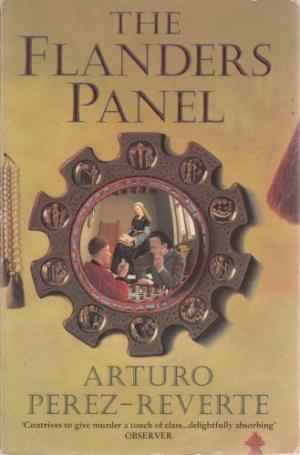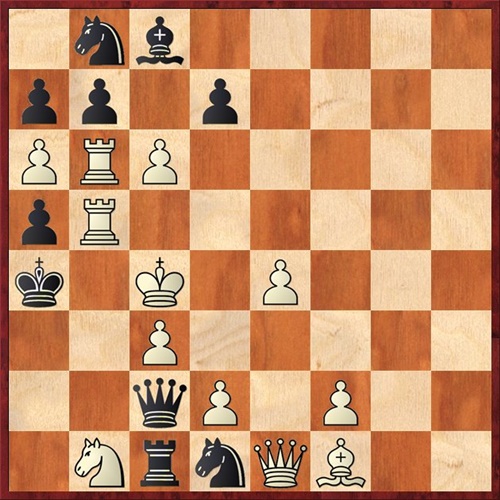 The Flanders Panel by Arturo Perez-Reverte
The Flanders Panel by Arturo Perez-Reverte
I thought I would share a book with you that I recently read. First published in 1990 it is not new but, I think, worth a read.
First and foremost it is very nice to find a novel that has some "real" chess in it. This is quite rare, possibly because most publishers don't want to risk
contracting their target audience down to just chess players! The following are, however, unashamedly a chess player's observations.
The book is a murder mystery and the solution to the mystery is embedded in a painting of a chess game between two characters in the 15th century. The game
position in the picture is the central clue, along with the hidden message "Who killed the knight?", which is revealed by a present day character who is restoring
the picture. The story then unfolds both in the past and present as two parallel murder mysteries.

The most important chess observation relates to the position in the painting, shown above. The story gradually establishes, by retrograde analysis, what the
last move by Black must have been. This is fundamental to the plot.
Unfortunately this puzzle is "cooked" as it has more than one solution! Instead of the move proposed, there are two other possibilities (hint: they both involve
capturing a piece by and then subsequent promotion of a pawn). The alternative solutions could have been eliminated by placing an extra White pawn on h2 in the
starting position. There are then not enough White pieces off the board to account for all the necessary captures required for the two "cooked" solutions to be
valid.
After the initial moves, leading to the diagram position, the remainder of the game is constructed around the plot and its characters rather than accurate
chess play. There are many chess improvements for both sides as the game unfolds although one might want to invoke the thought that some chess moves are forbidden
due to the plot line in mitigation for some of the oddities. There are also some clunky references such as Cifuentes variant (sic) of the Caro-Kann defence and
"knight three bishop queen" (sic) to describe a variation rather than a move.
Nevertheless, despite some chess deficiencies, the construction of the game to fit with the plot and the characters therein is a nice achievement.
From a novel perspective, instead of a nit-picking chess perspective, I think the stereotypically antisocial chess expert who helps with the chess mystery is
a somewhat lazy caricature. However, much of the book flowed quite nicely in terms of the pace of the story and interweaving of the plots in past and present.
I confess to being a little underwhelmed with the final denouement. It seemed rushed after a good opening and middlegame! Still, I am a chess player and
not a professional book reviewer and so I end by providing links to
reviews
by those who surely know better.
Overall I enjoyed the book and was pleased that it gave chess a serious treatment.
Paul Shepherd 19 March 2018
|
